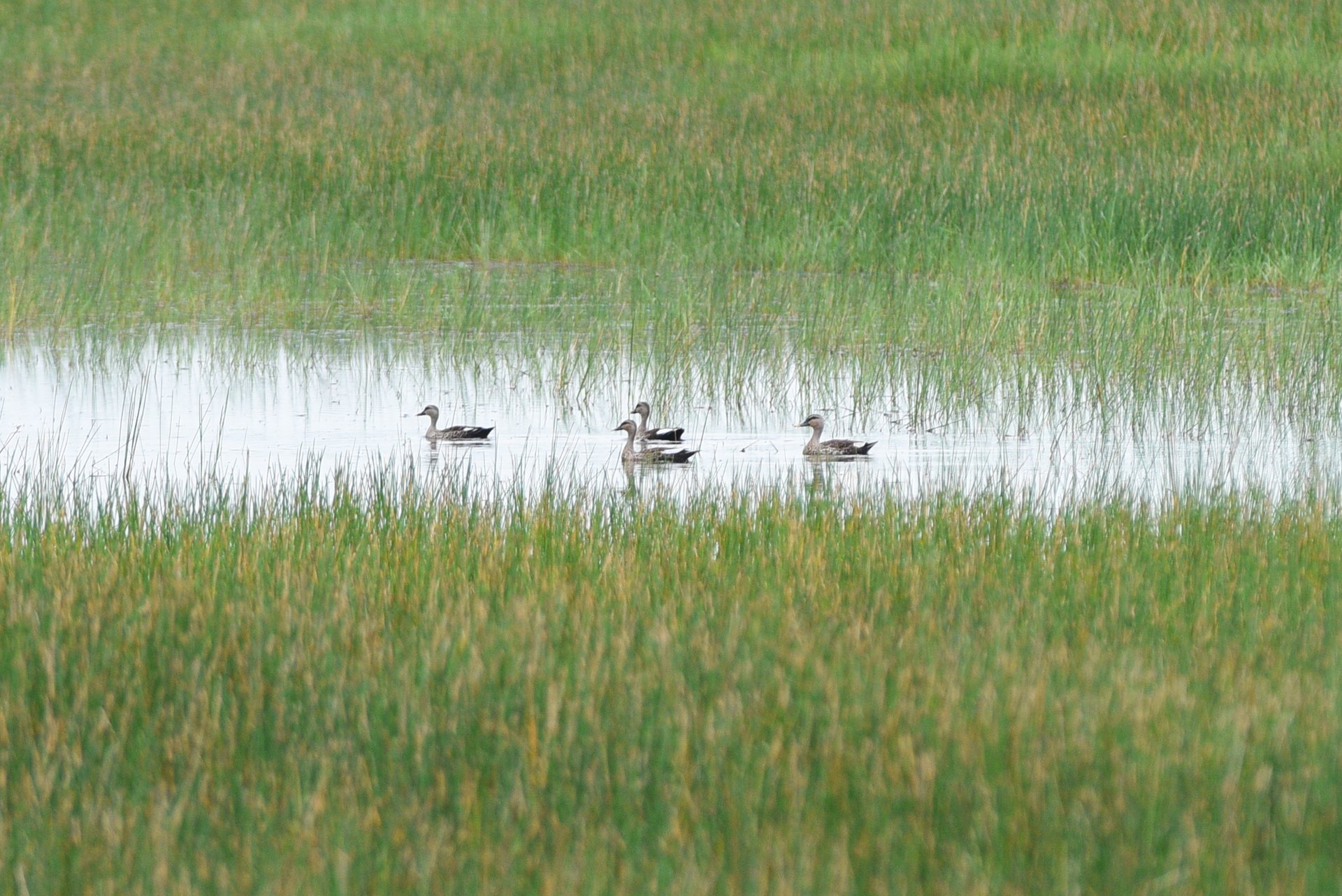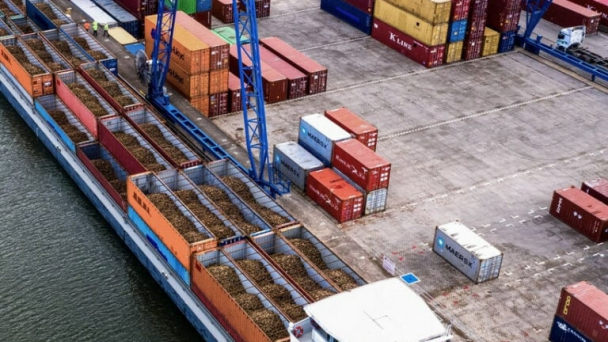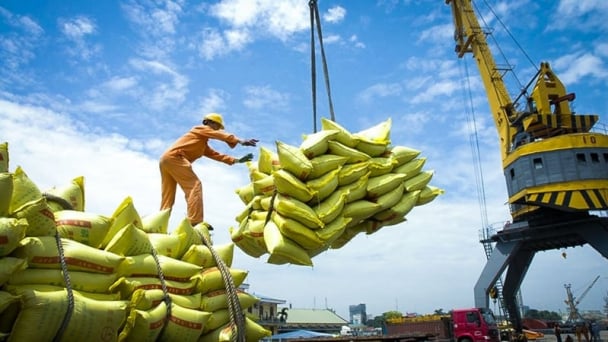May 24, 2025 | 16:21 GMT +7
May 24, 2025 | 16:21 GMT +7
Hotline: 0913.378.918
May 24, 2025 | 16:21 GMT +7
Hotline: 0913.378.918

The red-crowned cranes symbolize the culture in the Dong Thap Muoi region.
Red-crowned cranes are endangered in the International Union for Conservation of Nature’s Red List of Threatened Species.
Red-crowned cranes are usually found in three regions: India, East Asia, and Australia. The East Asian crane species can be found in Myanmar, Thailand, Cambodia, and Vietnam and is currently fewer than in the two other regions.
Over the past ten years, wild red-crowned crane populations have declined rapidly in Cambodia and Vietnam. The 2022 population census records under 160 individual cranes compared to 850 individuals in 2010.
Tram Chim National Park has favorable natural conditions characterized by purple spikerush. Therefore, red-crowned cranes used to migrate here during the dry season for their favorite food source.
However, the red-crowned crane population in Tram Chim is seriously declining. The numbers are the following: three individuals in 2017, 9 individuals in 2018, 11 individuals in 2019. No red-crowned cranes were seen in 2020; three individuals returned in 2021; and zero in 2022.
Mr. Nguyen Hoang Minh Hai, Head of the Research and International Cooperation Department at Tram Chim National Park, has many years of observing and studying red-crowned cranes. He understands this bird species’ ecological and cultural significance in the Mekong Delta and Dong Thap Muoi regions.
“For the local people, the red-crowned crane represents longevity, purity and loyalty. Therefore, they love this bird very much,” Mr. Hai informs. He also notes that the crane population has decreased from 1,000 to approximately 160. Therefore, local authorities of Dong Thap province and Tram Chim National Park are very aware of this species’ significance. They are aware of protecting and restoring this precious bird, which is on the brink of extinction.
As stated by Mr. Nguyen Hoai Bao, lecturer at the University of Natural Sciences (Vietnam National University, Ho Chi Minh City), the current decline of the red-crowned crane population confirms that this bird is on the verge of extinction in the Mekong Delta. He says, “The number of cranes in the Mekong Delta has decreased too quickly.”
According to Mr. Bao, the decline stems from the deteriorating habitat in the Mekong River basin, as happening in Laos and Cambodia. In addition, environmental pollution because of agricultural cultivation is another factor influencing the crane’s natural habitat.
Red-crowned cranes eat purple spikerush and find food in wild rice fields with a biodiversity of fish, shrimp, snails, and mice. A large-sized species, the red-crowned crane needs a significant amount of food to function.
“Red-crowned cranes are considered an indicator of wetland environments. When cranes no longer appear, it proves that the wetland environment is degraded and biodiversity is reduced,” Mr. Bao states.
To approach this challenge, Dong Thap province has implemented a project to preserve and restore the red-crowned cranes in Tram Chim. The project activities aim to revive the crane population and contribute to restoring habitat for many other species in this wetland environment.

The absence of red-crowned cranes shows significant environmental degradation in the Tram Chim area. Photo: Tung Dinh.
The Head of Research and International Cooperation Department at Tram Chim National Park, Mr. Nguyen Hoang Minh Hai, says that Thailand - despite having no cranes before - has managed to breed and sustain many red-crowned cranes.
Therefore, the People’s Committee of Dong Thap Province cooperates with the Vietnam Zoo Association (VZA), the International Crane Foundation (ICF) and the Zoological Park Organization of Thailand (ZPOT) to implement the Conservation and Development of Cranes Project.
Mr. Hai adds that the project aims to restore and develop the red-crowned crane population in Tram Chim by rearing and releasing it back into the wild. Specifically, within ten years (2023-2033), the project strives to release 150 cranes back to the wild with at least 100 successful cases.
“The mature cranes will be able to reproduce, survive and grow in the natural environment,” a Tram Chim National Park representative shares about the project.
The project has four main contents: raise and release cranes in Tram Chim National Park; improve the cranes’ habitat; build organic agricultural production areas around the area; promote, educate, and develop sustainable livelihoods based on cranes and organic agriculture; mobilize the participation of local communities. The total cost of the project is about 92 billion VND.
From a scientific perspective, Mr. Nguyen Hoai Bao further clarifies that the “golden period” for protecting cranes was five to seven years ago. However, no one would have imagined the crane population would decrease so quickly.
According to Mr. Bao, besides breeding, rearing and re-releasing red-crowned cranes into selected Tram Chim National Park areas, the authorities must simultaneously restore ecology for this area.
“We need to rear and release the cranes into the wild to see if they can live in that environment. The project is conditioned by the restoration of the original environment of this wetland,” Mr. Nguyen Hoai Bao emphasizes the restoration of the agricultural ecosystem in Tram Chim.
In doing so, the project not only preserve and restore Tram Chim’s ecosystem but also ensure farmers’ livelihoods in the area. These actions ensure a sustainable environment for red-crowned cranes to reproduce.
“Hopefully in the near future, there will be many cranes flying in the sky of Tram Chim,” says the bird expert from Vietnam National University, Ho Chi Minh City.
More than ten years ago, Tram Chim National Park witnessed the emergence of a canal and dike system with a total length of over 80 kilometers. The system aims to store water and prevent fires in Melaleuca forests and grasslands during the dry season.
This system, together with climate change, and pollution, has narrowed the natural habitat for red-crowned cranes. Scientists have discovered that some cranes get sick or die from hooks or pesticides.
Besides the direct transfer of individuals from Thailand, the Tam Nong district calls on farmers to grow organic rice in the natural crane conservation area to conserve the red-crowned cranes. The district has proposed Dong Thap province to support the plan’s implementation for three years (from now to 2025) on a buffer area of about 200 hectares. Specifically, in the following four rice crops, the district aims to reduce the percentage of chemical fertilizers by 30%, 50%, 70%, and 100%, respectively.

Ecological restoration not only helps protect cranes but is also a good solution for all plant and animal species in Tram Chim National Park. Photo: Tung Dinh.
Lessons from the red-crowned crane
According to Mr. Nguyen Hoang Minh Hai, the Head of Research and International Cooperation at Tram Chim National Park, recent climate change has impacted the ecosystem of this wetland area.
From the red-crowned crane situation, Tram Chim National Park experts realize they must maintain the natural environment for purple spikerush to grow, providing a rich food source to attract the cranes.
However, creating the right environment for purple spikerush is not easy. “It needs neither extreme dryness nor extreme wetness,” Mr. Hai says.
Therefore, Tram Chim National Park has called for the support of leading scientists and ecological experts to restore purple spikerush fields that are vast enough for cranes to migrate.
In addition, the park is also planning to restore the wetlands advisory group. These leading experts know very well about Tram Chim to help the park restore biodiversity.
Translated by Quynh Chi

(VAN) The mutual export of agrifood products between the European Union (EU) and the United Kingdom (UK) must occur again without certification, border controls or other red tape. This was agreed at the UK-EU summit.
/2025/05/22/5121-2-173645_677.jpg)
(VAN) NBSAP Tracker identifies strengths and areas for improvement in the National Biodiversity Strategy, based on each region’s priorities and capacities.

(VAN) The draft amendment to the Circular on rice export trading stipulates a periodic reporting regime for rice exporting enterprises.

(VAN) Dong Thap farmers attained an average profit margin of 64% during the summer-autumn 2024 crop (first season), while An Giang and Kien Giang farmers followed with 56% and 54%, respectively.

(VAN) As a doctoral student doing research on renewable energy and electrification at Harvard University, the author shares his musings on electricity, nature, and countryside memories.

(VAN) The decree on Extended Producer Responsibility (EPR) ensures transparent management and disbursement of support funds, avoiding the creation of a “give-and-take” mechanism.

(VAN) Hue City rigorously enforces regulations regarding marine fishing and resource exploitation, with a particular emphasis on the monitoring of fishing vessels to prevent illegal, unreported, and unregulated (IUU) fishing.